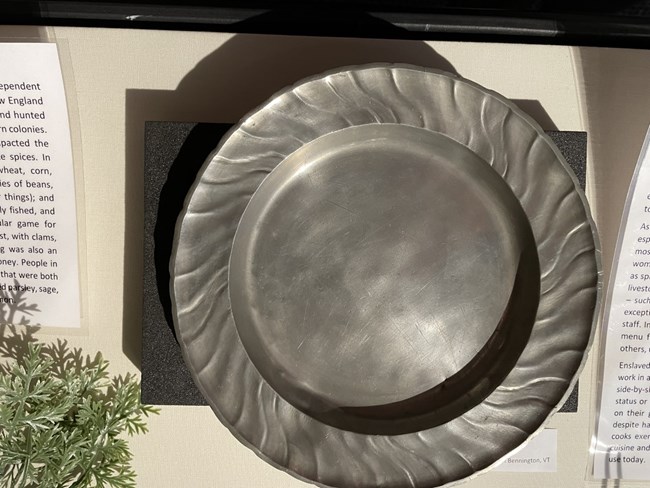
NPS Foodways: When Food Means MoreFoodways refer to the “eating habits and culinary practices of a people, region, or historical period.” Investigating foodways is an integral aspect of historical practice. Food and the practices surrounding its preparation and consumption are important expressions of culture that reflect the lives of individuals, family units, and whole communities. Foodways can be studied by examining archeological evidence of cooking practices, such as middens (garbage pits), material culture such as cooking tools and tableware, written accounts of meals in diaries and other media, and cooking instructions like recipes and cookbooks. Foodways offer insights into issues like gender, class, race, and politics – all of which impact a person’s experience over their lifetime. This is true for us today, as well as people of the past, including the period of the 18th century and the Revolutionary War.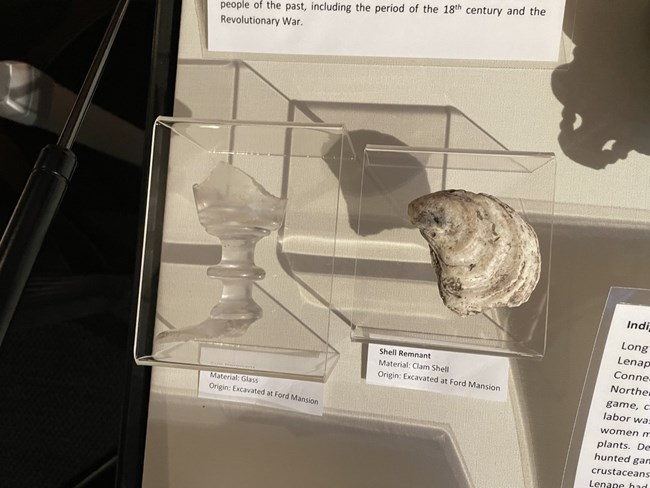
NPS Food as Social HistoryAt its core, food is a means of survival, making it one of the singular most important objects of human interest and experience across time. Hunting, gathering, growing, preparing, and eating food is a central aspect of our social lives, on both an individual level and in societies at large. When considering the role of food in the lives of our ancestors, there are many important questions to ponder: What and how did people eat? Who gathered ingredients and prepared the food? What social and cultural differences account for the experiences of different groups of people in their eating habits? These questions have formed the basis of whole areas of ongoing research, particularly on the part of historians, sociologists, and anthropologists. By asking these questions, we can begin to explore the ways in which the simple enterprise of eating is representational of larger historical movements and patterns across time, and better understand our food cultures as they exist in the present day. Indigenous Foodways of the Lenni-LenapeLong before Europeans arrived in the mid-Atlantic region, the Lenni-Lenape Nation consisted of a large swath of land that included Western Connecticut, Southeastern New York (and Manhattan), all of New Jersey, and Northern Delaware. The Lenni-Lenape prepared their food from hunted game, carefully tended crops, and gathered wild plants. Deer, elk, black bear, turkeys, ducks, and geese were frequently hunted game and fishing was an important core food source, with fish and crustaceans contributing to the bulk of the Lenni-Lenape diet. The Lenni-Lenape had a keen understanding of sustainability and selectively planned fishing and hunting practices to prevent resource depletion. Lenni-Lenape gardening favored the cultivation of corn, beans, and squash. Their innovative farming technique is famously called “The Three Sisters” in which corn, winter squash, and climbing beans were planted together to be self-fertilizing and pest-resistant. These crops were also nutritionally balanced, providing a diet of all the necessary amino acids. Sunflowers, pumpkins, herbs, and tobacco plants were also grown. Wild food plants like roots, berries, fruits, mushrooms, and nuts were also collected. Gathered foods were often eaten when ripe, dried for long-term storage, or used as ingredients in a variety of food preparations. The acorn was particularly versatile and was used to make cooking oil, porridge, and bread. The Lenni-Lenape were essential to the outcome of European colonists who learned from them how to survive in the climate of the Middle Colonies and New England. Their ingredients also became core foods in the colonial diet and continue to profoundly influence modern American food. By the end of the 18th century, however, most Lenni-Lenape had been driven away from their ancestral lands by European expansion, and remaining populations were further impacted by brutal programs of systematic forced removal implemented in the 19th century. Fortunately, Lenni-Lenape foodways continue to be studied, preserved, and practiced by modern indigenous groups and scholars. 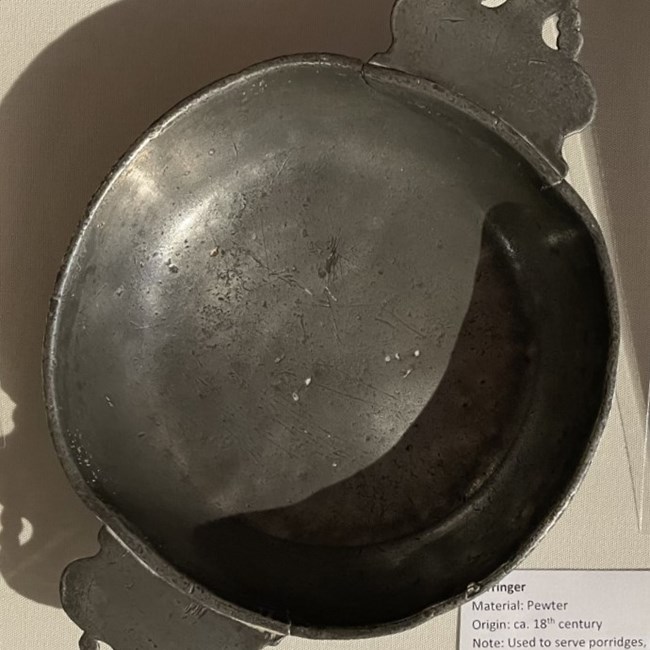
NPS Who cooked in colonial New Jersey?The division of labor in 18th century America was determined by gender, class, and ethnicity. Women and men operated under societal expectations that determined their roles within their homes and communities. During the early colonial period, men and women shared the work of surviving. However, as European colonists became more established, gender roles were more strictly divided. Men were expected to preside over farm, family, and business while women managed the home. As such, food preparation was labor that most often fell to women, especially in households of low to middling income, which accounted for most people in the colonies and Early Republic. Cooking took up much of a woman’s day, although she often had many other responsibilities such as spinning and weaving cloth, making clothing, tending to gardens and livestock, cleaning, and childrearing. Sometimes a woman’s occupation – such as innkeeper – demanded even more time in the kitchen. In exceptionally wealthy households, cooking was the responsibility of domestic staff. In such circumstances, the ‘lady of the house’ would determine a menu for the day or week and leave the labor of preparing food to others, usually servants and the enslaved. Enslaved people, who by this time were mainly of African descent, were forced to work in a variety of occupations; and men, women, and children worked side-by-side without much regard to gender. Enslaved cooks had no choice in their status or occupation and lived in a variety of conditions that depended on their geographical location and the whim of their enslaver. Despite having almost no control over their daily lives, however, enslaved cooks exerted a great deal of influence on the burgeoning American cuisine and crafted dishes and cooking techniques that we continue to use today. 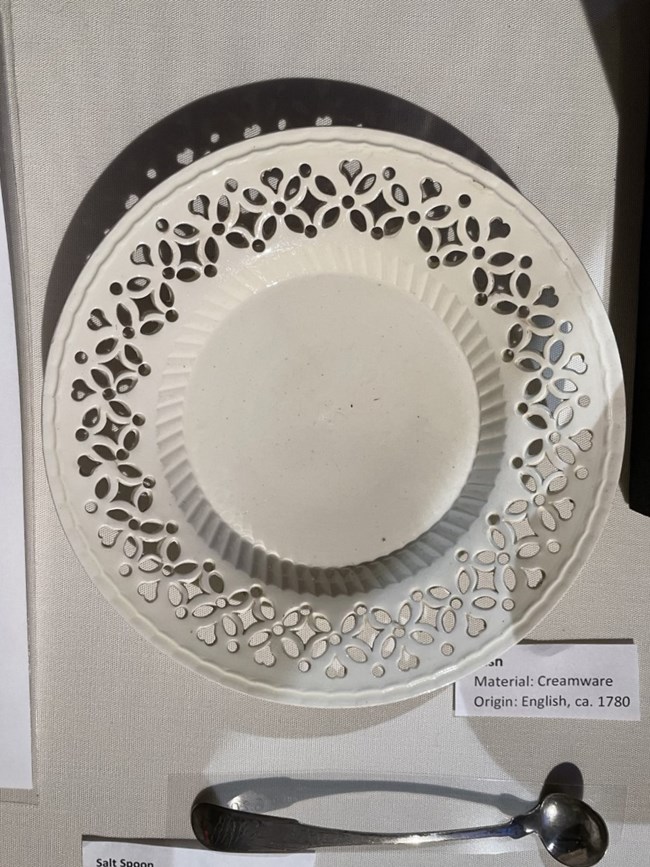
NPS What ingredients were available?The types of food available to any given person were highly dependent on season, climate, and geography. For example, those in New England and the Middle Colonies cultivated plants, raised livestock, and hunted wild game differently than those in the much warmer Southern colonies. Proximity to the coast also impacted the availability of food sources like fish and traded goods like spices. In Northern New Jersey, colonial settlements grew hay, wheat, corn, cabbage, squash, pumpkins, root vegetables, many varieties of beans, blueberries, cranberries, pears, and apples. Poultry, pigs, and cattle were common livestock. Ocean wildlife was harvested along the coast, with clams, eel, and scallops being particularly popular. Deer, turkeys, ducks, partridges, and quail were frequently hunted, and freshwater fish supplemented the colonial diet. Beekeeping was also an established practice, which provided a local supply of honey. People in the middle colonies also seasoned their food with herbs that were both cultivated and harvested wild. Popular seasonings included parsley, rosemary, sage, thyme, garlic, mace, ginger, salt, black pepper, allspice, nutmeg, and cinnamon. 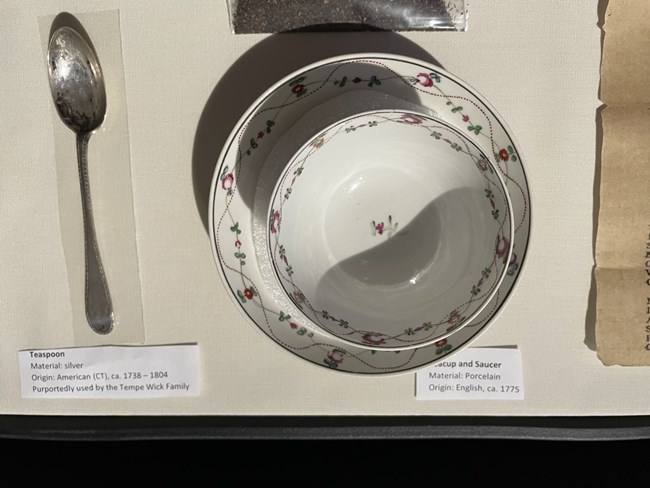
NPS What meals did people eat?To put it simply, there was no standard colonial American meal. The frequency, contents, and volume of a meal depended entirely on both social and environmental factors, in which a household’s financial means and geographical location played a large part. The aristocratic class, as with Royal Governors, would have had elaborate, multi-course meals prepared by “principal cooks.” Trained in Europe, the principal cooks prepared meals that reflected the tastes of the English aristocracy, often using French techniques. The gentry, a step below the aristocratic class, also demonstrated their social status at the dinner table by providing diverse selections, albeit in a more English tradition. The gentry’s food was more likely to have been prepared by servants and the enslaved than professional cooks. Although enslaved cooks did not often possess much formal training, the most skilled and talented often gained notoriety. The middling classes attempted to emulate the tables of the gentry, especially on holidays and when entertaining. However, they had far less variety with their daily fare and were less likely to rely on servants. Their meals might include two or three courses and ingredients that were purchased at market, rather than grown at home. Those on the bottom rung of the social ladder – which was most people – ate plainly, often cooking with only a single cast iron pot and few extra tools. Simple soups, stews, and grain porridges were most of a poor person’s diet, only supplemented by extra meats and vegetables when they were available. 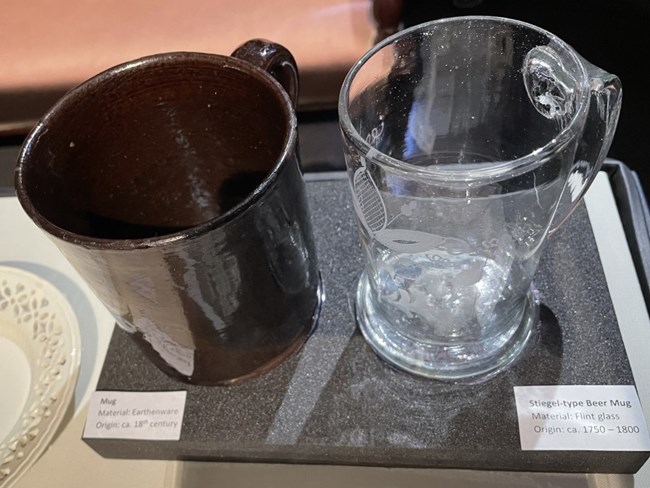
NPS Taverns: Food Outside The HomeIn addition to eating at home, residents of 18th century New Jersey would be familiar with establishments like inns and taverns that served food and drink. Taverns – also called “ordinaries” – were quite different than modern day restaurants and were not sought after for rarified experiences or specialty foods. Rather, they were intended as hospitality for travelers, entertainment venues, and social spaces for locals. Those in large cities could serve with more variety, quality, and comfort than those located along the frontier. Taverns sold food and drink, the quality of which often depended on the tavern’s location and the skill of the cook. Taverns that served the gentry and those in cities would often have more refined foods and entertainment, but the average tavern served inexpensive food that would have been familiar to those of humble means. In addition to providing hospitality, taverns also served as courtrooms, public forums, post offices, and news dispatchers. The expanded social role of taverns was very important during the revolutionary period, as they were crucial marketplaces of ideology that promoted the mixing of social classes and exchange of ideas. As the Revolutionary War went on, taverns became important gathering locations for military strategizing and housing officers. They were also some of the first statehouses in the fledgling post-Revolutionary democracy. 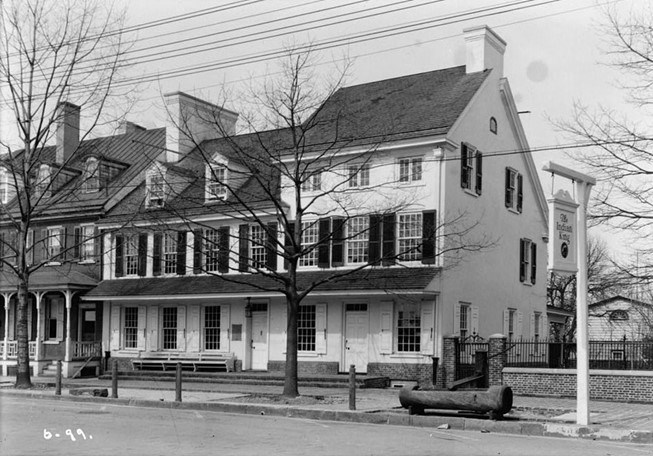
NPS 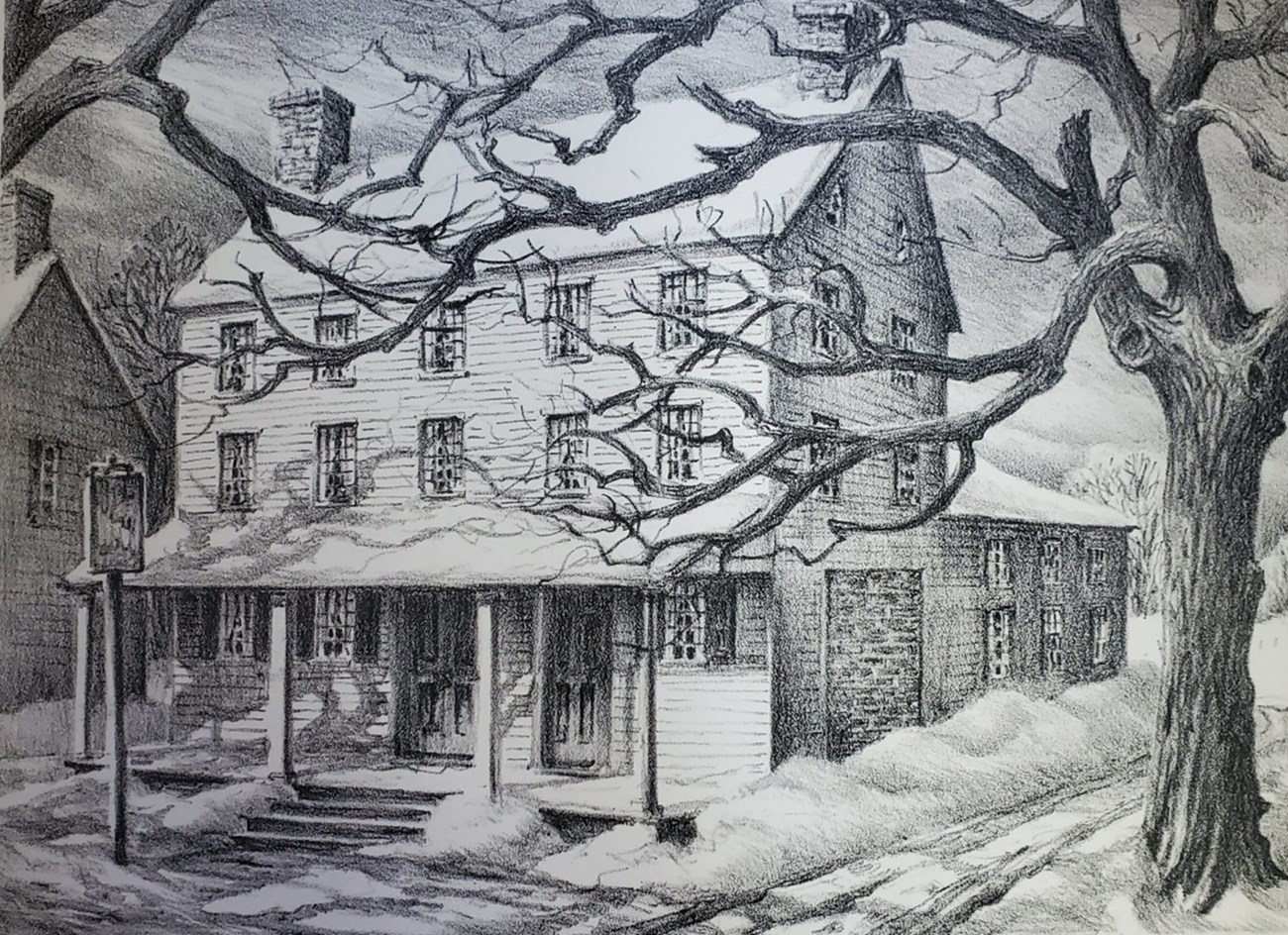
NPS 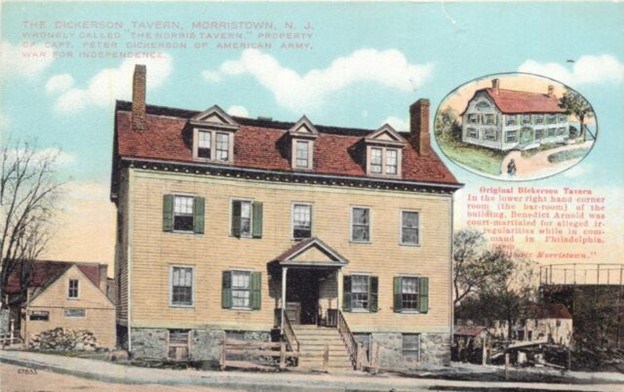
NPS 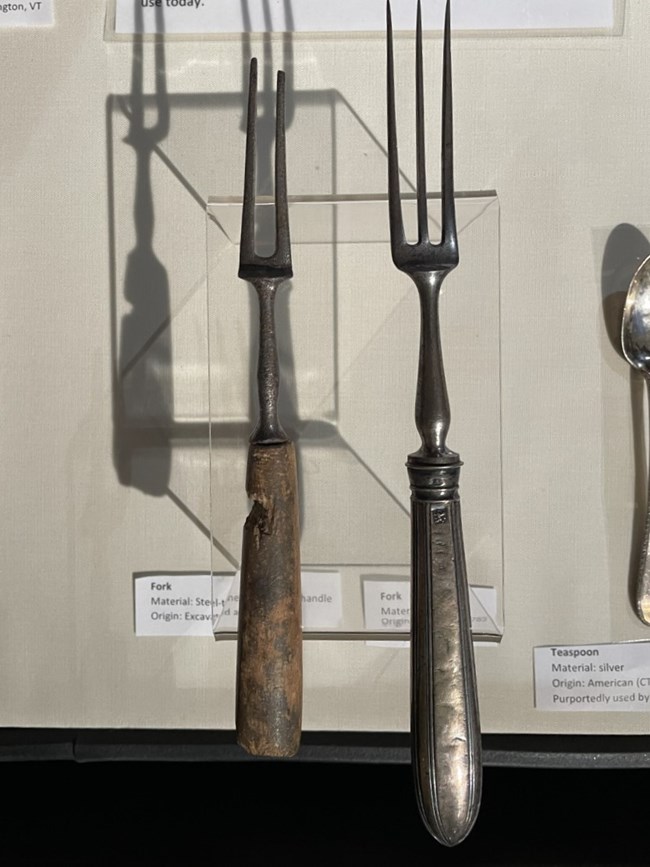
NPS Food and PoliticsFood culture was heavily impacted by the upheavals of the Revolution. Trade restrictions, inflation, food shortages, military blockades, and boycotts all impacted how people ate and the discourses around food were very politically fraught. Foodstuffs were at the center of the Revolution itself, as goods like tea, molasses, chocolate, and coffee came to symbolize the core issues of the conflict over taxation. Some of the most famous revolutionary events concerned food: The “Boston Tea Party,” for example, resulted in the destruction of an entire shipment of tea. Food riots occurred across the colonies, in which crowds confronted shopkeepers and merchants over high prices and the intentional withholding of goods from the marketplace. There was also much frustration over the requisitioning of food by both the Continental and British armies. These confrontations were an important means by which those of low and middling status – who did not have property or the vote – engaged in political action. In addition to direct confrontation like rioting, political sentiment was expressed by participating in boycotts. When possible, Americans attempted to undermine British taxes and war-related trade restrictions by refusing to buy imported British goods. In New Jersey, for example, honey and native tea plants were cultivated as local alternatives. The involvement of significant numbers of women in protest and boycott efforts are particularly notable articulations of political agency in a time when women did not have rights in the civic sphere. |
Last updated: January 10, 2023
